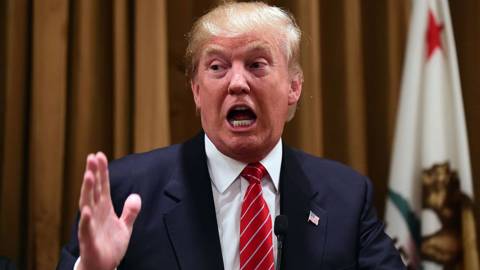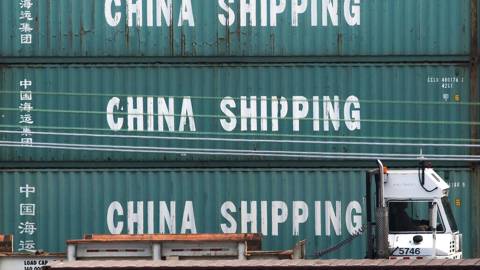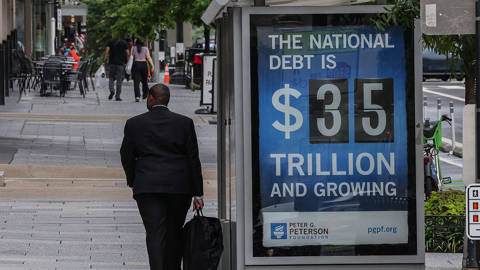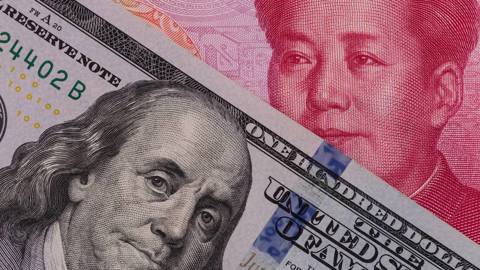Scientists predict that at least a third and as much as two-thirds of the world’s species could be on their way to extinction by the end of this century. Given the enormous economic costs and human suffering that this implies, the world’s richest countries must go beyond studying the problem and make a significant down payment on solving it.
This year’s G8 summit in Germany was unusual in that, a month later, people are still talking about whether or not it achieved anything. But one breakthrough at the summit is undeniable: amidst all the talk of economic growth and exchange rates, a new statistic appeared on the agenda of the world’s richest countries: extinction rates.
For the first time, the leaders of the world’s most powerful nations took notice of a constituency that they have largely ignored – the wild animals, fish, and plants that make up all the millions of living species on the planet besides humans.
Scientists predict that at least a third and as much as two-thirds of the world’s species could be on their way to extinction by the end of this century, mostly because people are destroying tropical forests and other habitats, over-fishing the oceans, and changing the global climate.
The world’s wealthiest countries endorsed the idea of an international study to examine the economic benefits of conserving the world’s wildlife. While this is a good first step, we already know much.
Wild species of bats, birds, and amphibians add several billion dollars each year to the world’s agricultural economy by controlling pests and pollinating major crops – a free service that they get little credit for providing. Coral reefs, 27% of which have already disappeared, sustain marine resources that add $375 billion to the global economy each year.
Likewise, more than a quarter of all medicinal drugs, representing billions of dollars in sales and reduced healthcare costs, possess active ingredients derived from wild species. And when natural forest habitat is cleared, the hardened soils left behind allow pooled water to breed mosquitoes that have increased the number of worldwide deaths from malaria.
Economists already understand that for more than a billion of the world’s poorest people, income does not come from any bank or government program, but from the intricate tapestry of forests, oceans, and wildlife that surrounds them. Yet billions of the world’s poorest people live on degraded landscapes, deforested and eroded soils, and over-fished coastlines where conservation is vital to lifting them out of poverty.
As a result, conservation is as much a human rights issue as an environmental one.
The new study endorsed by the G8 heads of state will certainly direct welcome new attention to this fact. But, given that many scientists believe that we have only a couple of decades left to protect the world’s remaining natural habitats, it is imperative that concrete and urgent steps to protect wildlife be taken now.
In addition to bringing global warming under control by reducing greenhouse gas emissions, we must build a much larger and more sophisticated global conservation reserve system that encompasses the most wildlife-rich land and marine areas. Existing reserves in areas with the highest concentrations of species, which lie mostly in developing countries, need to be extended and linked through corridors. This will enable wildlife to move into new environments, escape habitat destruction, and adapt to climate changes.
At the same time, people living in or near such reserves must be given the assistance they need to farm, fish, and earn a livelihood in ways that do not destroy the very ecosystems on which both they and wildlife depend.
We already know how to do this. It just costs more than we have been willing to spend. The wealthy G8 nations – which alone can afford to invest in such an ambitious worldwide project – together spend several hundred million dollars a year on global conservation activities. Conservation experts say that the annual investment will eventually need to be close to $6 billion – roughly what the world spends every year on potato chips.
Eventually, a worldwide carbon trading system could generate much of the money needed to finance a global conservation network. This would offer the double benefit of capturing greenhouse gas pollution and saving the world’s wildlife from oblivion.
Until then, the world’s richest countries are the only ones that can begin pulling together the seed money, a “Global Species Rescue Fund,” to get the effort started. Next year’s G8 meeting in Japan must go beyond studying the problem to making a significant down payment on solving it.
Rich or poor, industrial or rural, we are all connected to the world’s diversity of life. The oceans, forests, grasslands, and all the places called home by the millions of other species sharing our planet are a part of our lives too. It is time we recognized that, and demanded that our leaders work to create a sustainable future for ourselves and a legacy that our children will admire.









This year’s G8 summit in Germany was unusual in that, a month later, people are still talking about whether or not it achieved anything. But one breakthrough at the summit is undeniable: amidst all the talk of economic growth and exchange rates, a new statistic appeared on the agenda of the world’s richest countries: extinction rates.
For the first time, the leaders of the world’s most powerful nations took notice of a constituency that they have largely ignored – the wild animals, fish, and plants that make up all the millions of living species on the planet besides humans.
Scientists predict that at least a third and as much as two-thirds of the world’s species could be on their way to extinction by the end of this century, mostly because people are destroying tropical forests and other habitats, over-fishing the oceans, and changing the global climate.
The world’s wealthiest countries endorsed the idea of an international study to examine the economic benefits of conserving the world’s wildlife. While this is a good first step, we already know much.
Wild species of bats, birds, and amphibians add several billion dollars each year to the world’s agricultural economy by controlling pests and pollinating major crops – a free service that they get little credit for providing. Coral reefs, 27% of which have already disappeared, sustain marine resources that add $375 billion to the global economy each year.
Likewise, more than a quarter of all medicinal drugs, representing billions of dollars in sales and reduced healthcare costs, possess active ingredients derived from wild species. And when natural forest habitat is cleared, the hardened soils left behind allow pooled water to breed mosquitoes that have increased the number of worldwide deaths from malaria.
BLACK FRIDAY SALE: Subscribe for as little as $34.99
Subscribe now to gain access to insights and analyses from the world’s leading thinkers – starting at just $34.99 for your first year.
Subscribe Now
Economists already understand that for more than a billion of the world’s poorest people, income does not come from any bank or government program, but from the intricate tapestry of forests, oceans, and wildlife that surrounds them. Yet billions of the world’s poorest people live on degraded landscapes, deforested and eroded soils, and over-fished coastlines where conservation is vital to lifting them out of poverty.
As a result, conservation is as much a human rights issue as an environmental one.
The new study endorsed by the G8 heads of state will certainly direct welcome new attention to this fact. But, given that many scientists believe that we have only a couple of decades left to protect the world’s remaining natural habitats, it is imperative that concrete and urgent steps to protect wildlife be taken now.
In addition to bringing global warming under control by reducing greenhouse gas emissions, we must build a much larger and more sophisticated global conservation reserve system that encompasses the most wildlife-rich land and marine areas. Existing reserves in areas with the highest concentrations of species, which lie mostly in developing countries, need to be extended and linked through corridors. This will enable wildlife to move into new environments, escape habitat destruction, and adapt to climate changes.
At the same time, people living in or near such reserves must be given the assistance they need to farm, fish, and earn a livelihood in ways that do not destroy the very ecosystems on which both they and wildlife depend.
We already know how to do this. It just costs more than we have been willing to spend. The wealthy G8 nations – which alone can afford to invest in such an ambitious worldwide project – together spend several hundred million dollars a year on global conservation activities. Conservation experts say that the annual investment will eventually need to be close to $6 billion – roughly what the world spends every year on potato chips.
Eventually, a worldwide carbon trading system could generate much of the money needed to finance a global conservation network. This would offer the double benefit of capturing greenhouse gas pollution and saving the world’s wildlife from oblivion.
Until then, the world’s richest countries are the only ones that can begin pulling together the seed money, a “Global Species Rescue Fund,” to get the effort started. Next year’s G8 meeting in Japan must go beyond studying the problem to making a significant down payment on solving it.
Rich or poor, industrial or rural, we are all connected to the world’s diversity of life. The oceans, forests, grasslands, and all the places called home by the millions of other species sharing our planet are a part of our lives too. It is time we recognized that, and demanded that our leaders work to create a sustainable future for ourselves and a legacy that our children will admire.